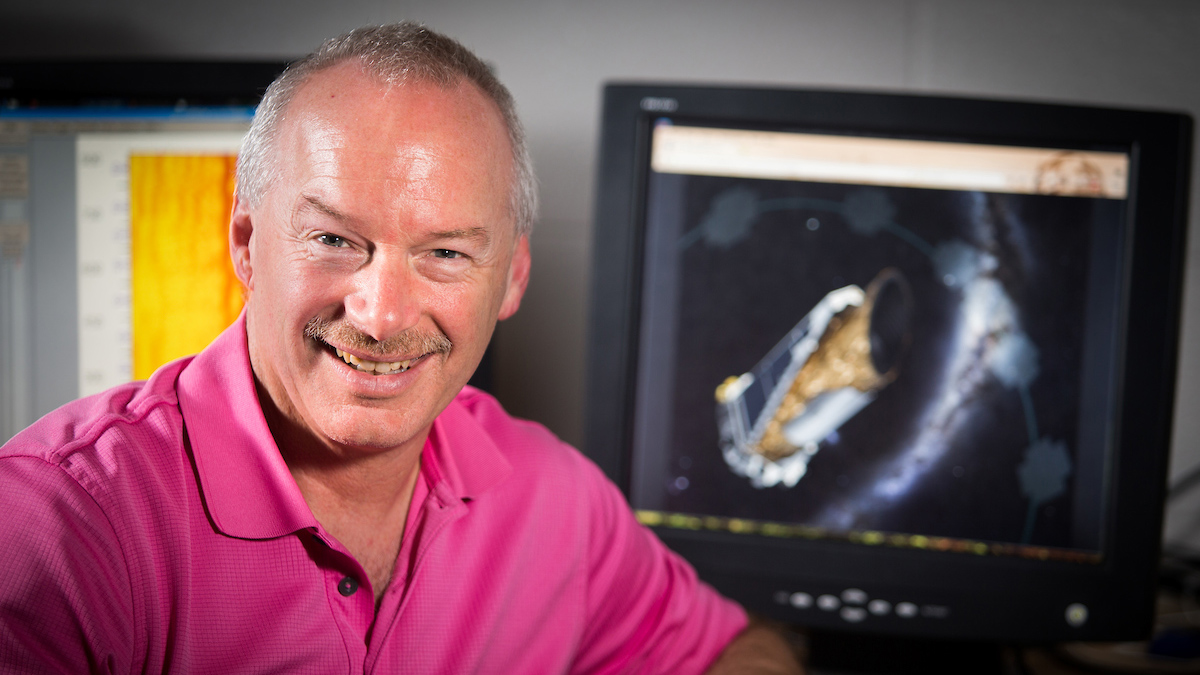Dr. Mike Reed, two students, Laura Katzer and John Crooke, and several international collaborators recently published work on evolved (subdwarf) stars.
Their paper, entitled, “Two p-mode dominated subdwarf B pulsators in binaries with F-star companions observed with K2” analyzed seismic reading of stars found with the Kepler space telescope.
About their research
Reed, professor of astronomy, and the students looked at two late-evolution stars and their companions. Late evolution stars used to be as bright as our Sun. An estimated five billion years later, they become late evolution stars.
Reed looked at the vibration of stars to “see” what is inside of them. With the two stars, they looked at pressure (p) and gravity (g) modes.
“An Earth simile for p and g modes is like throwing a rock into a quiet pond: The ‘bloop’ of the rock hitting the water is the p mode and the ripples in the water are the g modes,” Reed said. “In stars, the g modes probe deeply while the p modes stay nearer to the surface. By comparing the two, we can see differences within stars.”
In the two stars they looked at, they expected similar results since the stars are very similar.
They were wrong.
One of the stars is spinning slower in the core than the outside. The other is spinning at the same rate everywhere. One star has overtones that was consistent with what they predicted. The other is significantly different than the prediction in both p and g modes.
“The fact that we have contradictory results in two very similar stars, with similar companions, is surprising,” Reed said. “It means the evolution that occurred between being like our Sun to how they are now is finely tuned: like balancing on a fence, they could fall to either side. We do not know why they turn one way or the other.”
Adding to the Kepler data
Reed was excited about the findings, but he was also glad to have his students learn valuable skills in astronomy.
“Each student processed the data for one of the stars and then applied our seismic tools to interpret the results,” Reed said. “They learned how to process space telescope data and interpret the seismology.”
NASA announced that the Kepler space telescope ran out of gas in October. Though it lasted much longer than anyone anticipated, it is still bittersweet.
“Kepler data changed our view of the Universe,” Reed said. “Before Kepler, we thought five percent of stars had planets, and we now understand that there are more planets than stars.”
Reed also explained that the type of stars in his publication were discovered in 1995.
“In 15 years between discovery and Kepler data, we worked very hard to learn a little,” Reed said. “With Kepler data, we are able to fully exploit seismology and its tools.”
“These two stars will be critical tests,” Reed said. “Now that we know their seismic properties and differences, we can look for associated differences in chemical composition and modify models to probe structural differences between them.”

